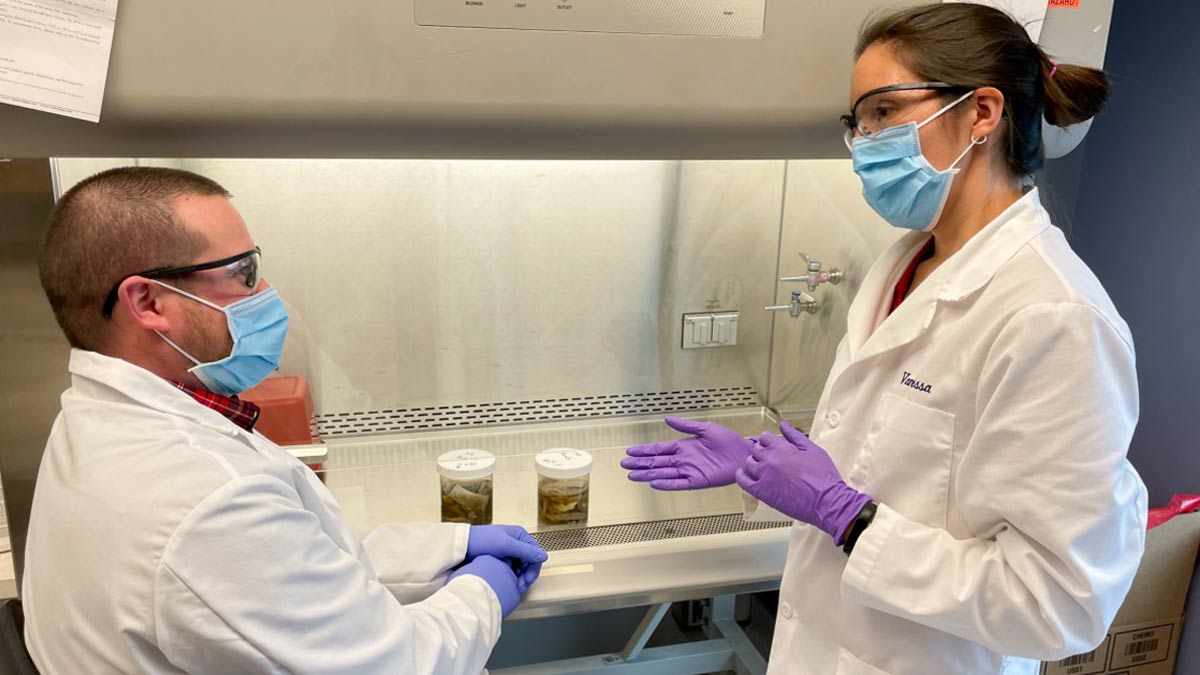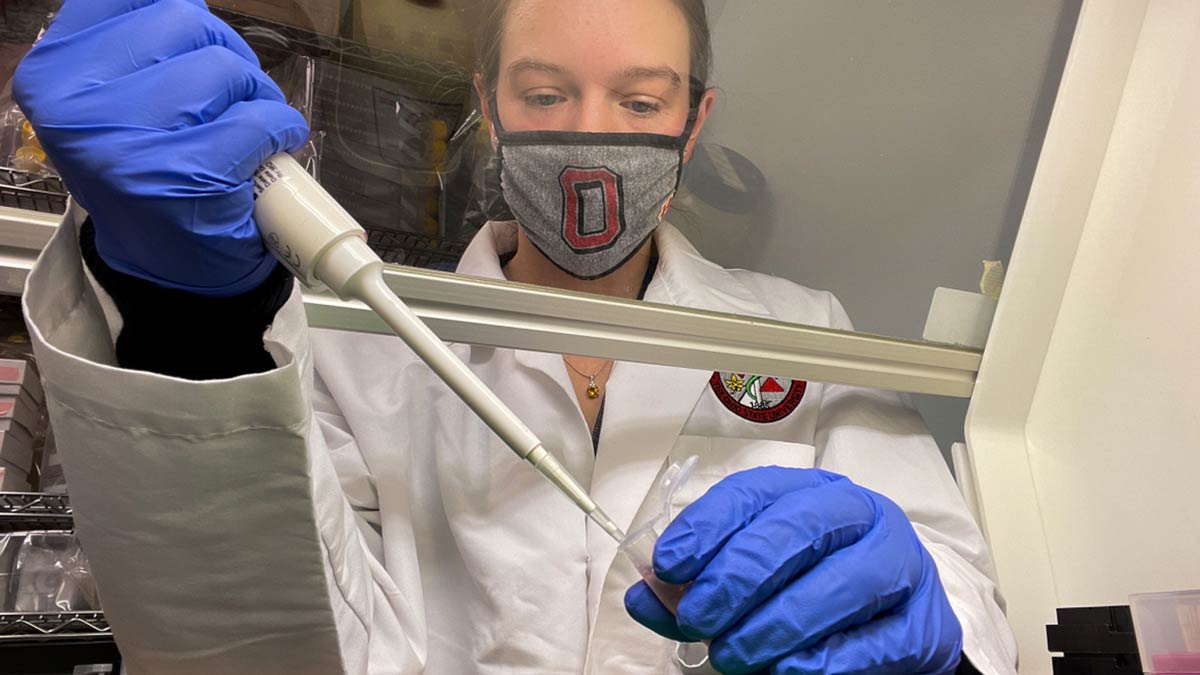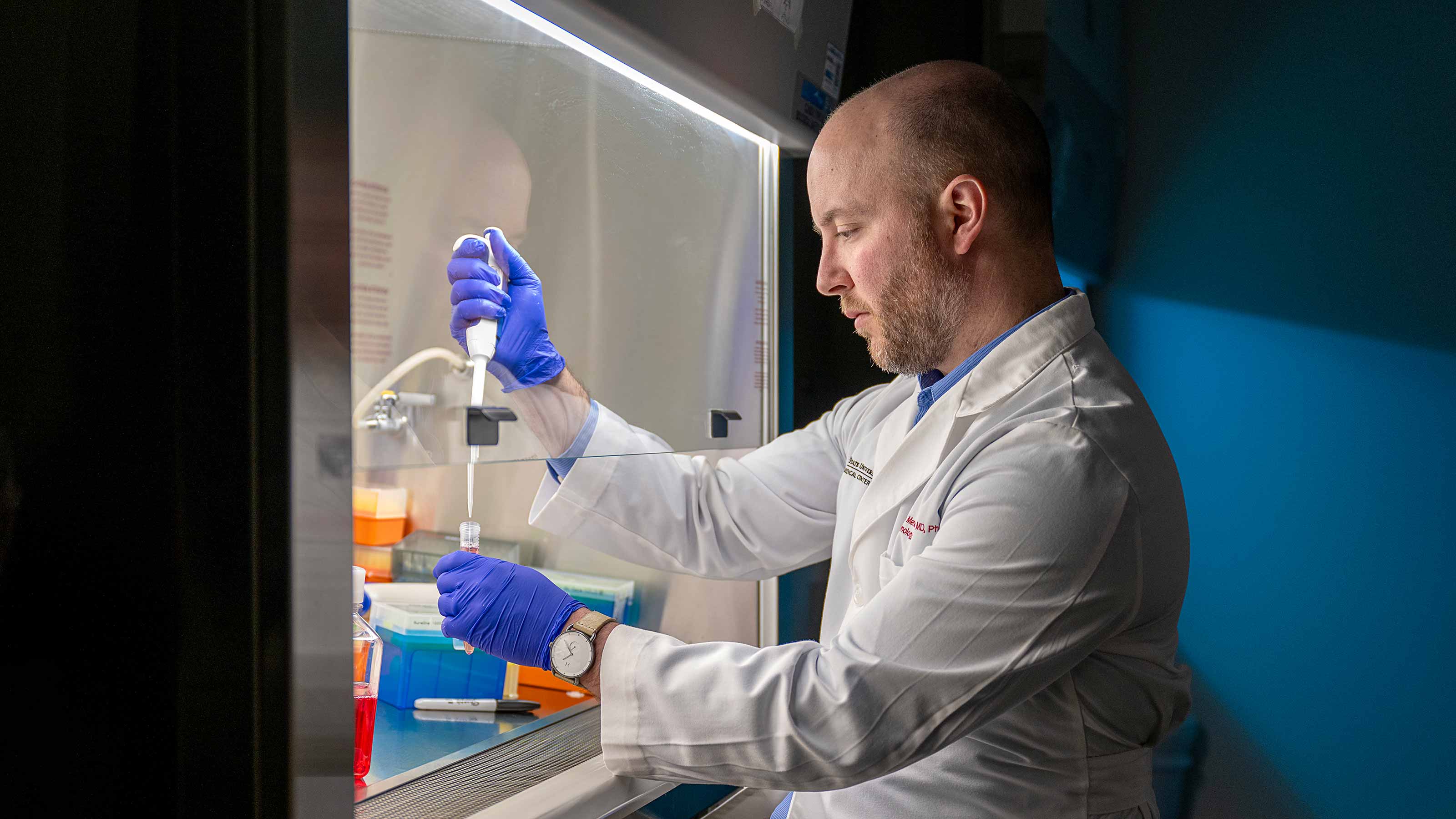Researchers at Ohio State are using environmental surveillance to identify future pandemic threats
While much effort is currently invested in understanding SARS-CoV-2 transmission and infection dynamics in humans, the potential role of viral persistence and spread in non-human sources and environmental reservoirs remains largely unknown.
Dr. Vanessa L. Hale, assistant professor of veterinary preventive medicine at The Ohio State University College of Veterinary Medicine, alongside peers from the Infectious Disease Institute and Center of Microbiome Science, is coordinating the efforts of investigators across various departments and colleges at Ohio State to characterize the SARS-CoV-2 virus in environments outside of humans.
The University-wide program including veterinarians, microbiologists and epidemiologists is known as eSCOUT: Environmental Surveillance for COVID-19 in Ohio: Understanding Transmission. Together, these experts are testing pets, farm animals and wildlife and examining samples in the lab. The goal is to identify whether the virus exists in different animal populations and the likelihood that those animals could harbor mutations and potentially pass COVID-19 back to humans in a new form.

“It’s not good enough to just respond to a pandemic. We need to be prepared for it.”
“We spend a lot of time understanding how the disease transmits within humans, and now we are taking a step back to examine if animals can carry the virus, if they get sick and whether they can re-infect humans. Finding the answers to these questions will help predict and prevent future infections.”
Researchers found SARS-CoV-2 in about 35% of free-ranging white-tailed deer sampled in Ohio, according to an article published in Nature in Dec. 2021. At least 6 unique human-to-deer transmission events were identified based on the SARS-CoV-2 variants present in deer. The findings raise important questions about deer as a potential reservoir for SARS-CoV-2 and how the disease is managed moving forward. No evidence of deer-to-human transmission was identified in this study. SARS-CoV-2 viruses have the ability to infect and transmit in US wildlife, potentially creating more variants.
Identifying SARS-CoV-2 in animals can help to start answering questions about what kinds of animals can be infected, symptomatically or asymptomatically, and if these animals can then transmit the virus to other animals or people. Environmental and animal surveillance will provide critical insights on current circulating SARS-CoV-2 strains as well as emerging mutations and spread.

This monitoring is vital to help predict and prevent future outbreaks and spillover events.
eSCOUT is also involved in testing wastewater and storm water (urban runoff) around Ohio for SARS-CoV-2. Identifying the virus in wastewater can help determine how much and what strain of virus is circulating within a population. Viral spikes in wastewater also allow early detection of outbreaks.
“Pandemics really highlight one health, which is human health, animal health and environmental health,” Hale said.“Veterinarians, as well as environmental microbiologists, wildlife biologists and epidemiologists are really essential to understanding the whole dynamic of a pandemic.”
Environmental surveillance has been used in the past to identify new strains of the flu that could potentially spillover from animals to humans. It’s likely that this same kind of surveillance will play a critical role in mitigating the COVID-19 pandemic as well as long-term preventive efforts.
Editor’s note: As what we know about COVID-19 evolves, so could the information in this story. Find our most recent COVID-19 articles here and learn the latest in COVID-19 prevention at the Centers for Disease Control and Prevention. Some photos and videos on this site were filmed prior to the COVID-19 outbreak or may not reflect current physical distancing and/or masking guidelines.






